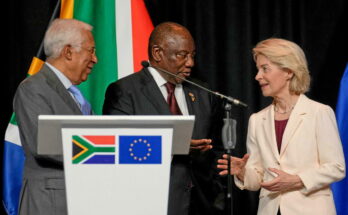This is not (yet) “the end of work”, as Jeremy Rifkin prophesied, but it is certainly the beginning of a new industrial revolution: that of artificial intelligence. According to a World Economic Forum report published in October, in less than 5 years, 86% of companies will structurally use “AI agents” capable of managing complex activities under human supervision. This evolution is complete bother compared to previous models and, although it promises enormous increases in productivity, it radically upends the hierarchy, skill and collaboration models. More than just a technological challenge, this is a cultural transformation.
With the advent of Covid, organizational models have changed, transforming the relationship of culture to work (Big Quit, Yolo syndrome, Smart Working, balance of professional and personal life). Something similar also happened with the emergence of the Internet or personal computers. Now, with AI entering every business process, we can witness something even more profound. Artificial intelligence improves analysis and speeds decision-making, but if not integrated properly, it can result in parallel and fragmented processes. Because this approach is often used in an unstructured, casual, and informal approach, it can shift the internal balance and create misalignment. In short, it is bother. Therefore, it is necessary to introduce a new organizational paradigm that is virtuous. The “Agile” one.
Agile methodology offers an adaptive approach that allows AI to be continuously and coordinated incorporated into teams, decision-making, and hierarchies. The Agile approach and the figure of the Agile Coach are not only process facilitators, but also mediators between human intelligence and artificial intelligence. The mission is actually to guide people from “doing Agile” to “being Agile”: increasing trust, continuous learning, and authentic collaboration.
While AI performs analytical and repetitive tasks, humans need to develop emotional, creative and systemic skills. In this balance, ethics becomes a pillar of agile working: experimenting beyond known boundaries, but with responsibility, transparency and awareness. The combination of agility and artificial intelligence paves the way for “live” businesses, able to adapt and learn in real time. AI provides analytical and research capabilities, agility ensures flexibility and collective intelligence. Together, they make the organization an ever-evolving ecosystem.
AI’s creative contribution
Example: in a hybrid creative team, AI participates in sessions as an actual group member. While the human part discusses ideas and suggestions, the AI processes sketches, palettes and visual concepts in real time, providing ideas, interpreting conversations and anticipating the outcome. The effect is a co-creative flow, where artificial intelligence does not execute, but co-creates by participating in “human” work, influencing it and, in some way, changing it compared to traditional methods. In this context, the Agile Coach becomes a “cultural translator” between humanity and technology: he ensures that language, processes and learning remain accessible and coherent to all team members. And it also helps to manage new, “accelerated” situations, balancing logic and empathy, automation and common sense, asking the right questions and the right reasons. In practice, it acts as a bridge between two different worlds but should create a shared future.



